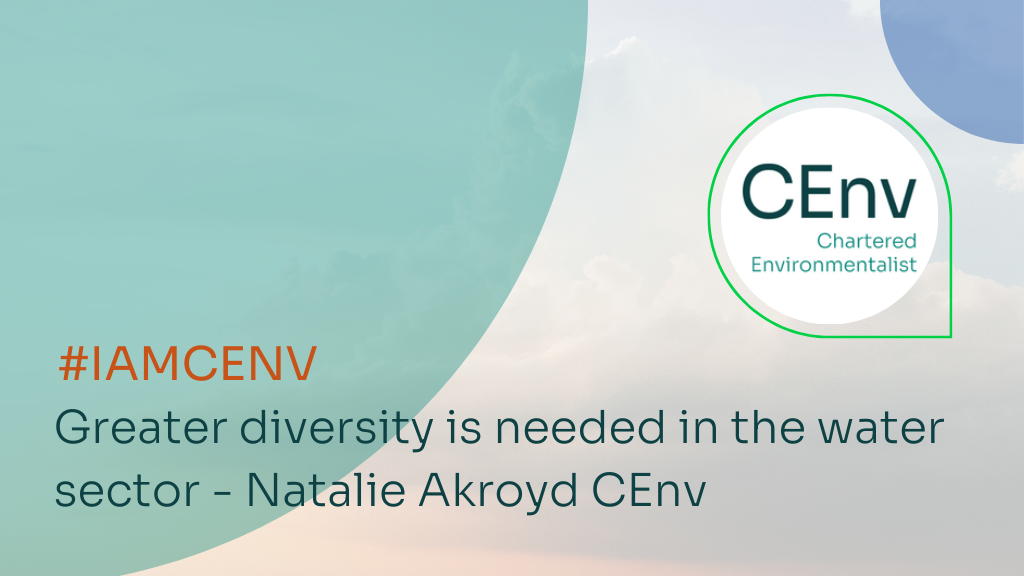Natalie Akroyd CEnv has told us why diversity is needed in the environmental profession but more specifically within the water sector. Continue reading to find out Natalie’s thoughts on this topic.

Why is diversity needed in the environmental profession?
I’ve been in the water sector for over 20 years now. When I first joined aged 21, I worked in the clean water networks department and was the only female. Several sites I would attend didn’t have female toilets. Fast forward 20 years and I’m now part of an organisation where three out of the five Executive committee members are female. Overall we still have notably more male than female employees, but we’re definitely moving in the right direction.
But the water sector is much bigger than just the water companies, and that became all too apparent last week when I attended an industry conference. 90% of the attendees were male. On a day designed to help stimulate thought, challenge and new ideas, I wonder how much variety of thinking there was? I heard lots of conversations between sessions and plenty of violent agreement on some of the key topics of the day. But if we’re really going to keep driving improvements, innovating for the challenges we face and delivering for our customers and the environment now and in the future I think we need to be questioning and challenging our thinking and that of our peers and colleagues. Would more diversity in attendees have led to more diversity of thinking and therefore outputs?
That’s why I think diversity is so important, and of course we all know diversity is far wider ranging than gender. Five years ago, a Policy Exchange survey identified the environment and sustainability sector as the second least diverse out of 202 professions in the UK. We urgently need to look at why this is and why our sector either doesn’t appeal or has closed doors to any individual. And that is because diversity is critical if we’re to truly rise to meet the challenges our environment is facing right now. People from different backgrounds, faiths, races, gender, beliefs and preferences bring different experiences, thinking and approaches.
This is not diversity just because it’s the right thing to do, it’s because it truly makes a quantifiable difference. Surveys by McKinsey & Company and Catalyst revealed that companies with greater gender diversity in their leadership teams outperform those with less, often by as much as 30%. Of the nine water and sewerage companies in England, six of these are now led by women. Severn Trent Water recently announced some changes to their leadership team which means that they’re the first FTSE100 company to have women in the three key roles of CEO, Chair and CFO. But we need to focus on diversity at all levels within an organisation – often the best ideas come from those closest to the challenge.
So on gender diversity, we’re making some slow progress. But gender is arguably the area of diversity that has had the most focus in recent years – there is an enormous amount to do to make our industry truly diverse. We need to make sure we address the barriers that are inhibiting anyone from bringing that diversity of experience and thinking into our industry to help us meet the challenges and make a real step change in performance.
Watch Natalie’s #IAmCEnv video on advice for aspiring professionals and students here:
Natalie is registered as a Chartered Environmentalist via membership of:


